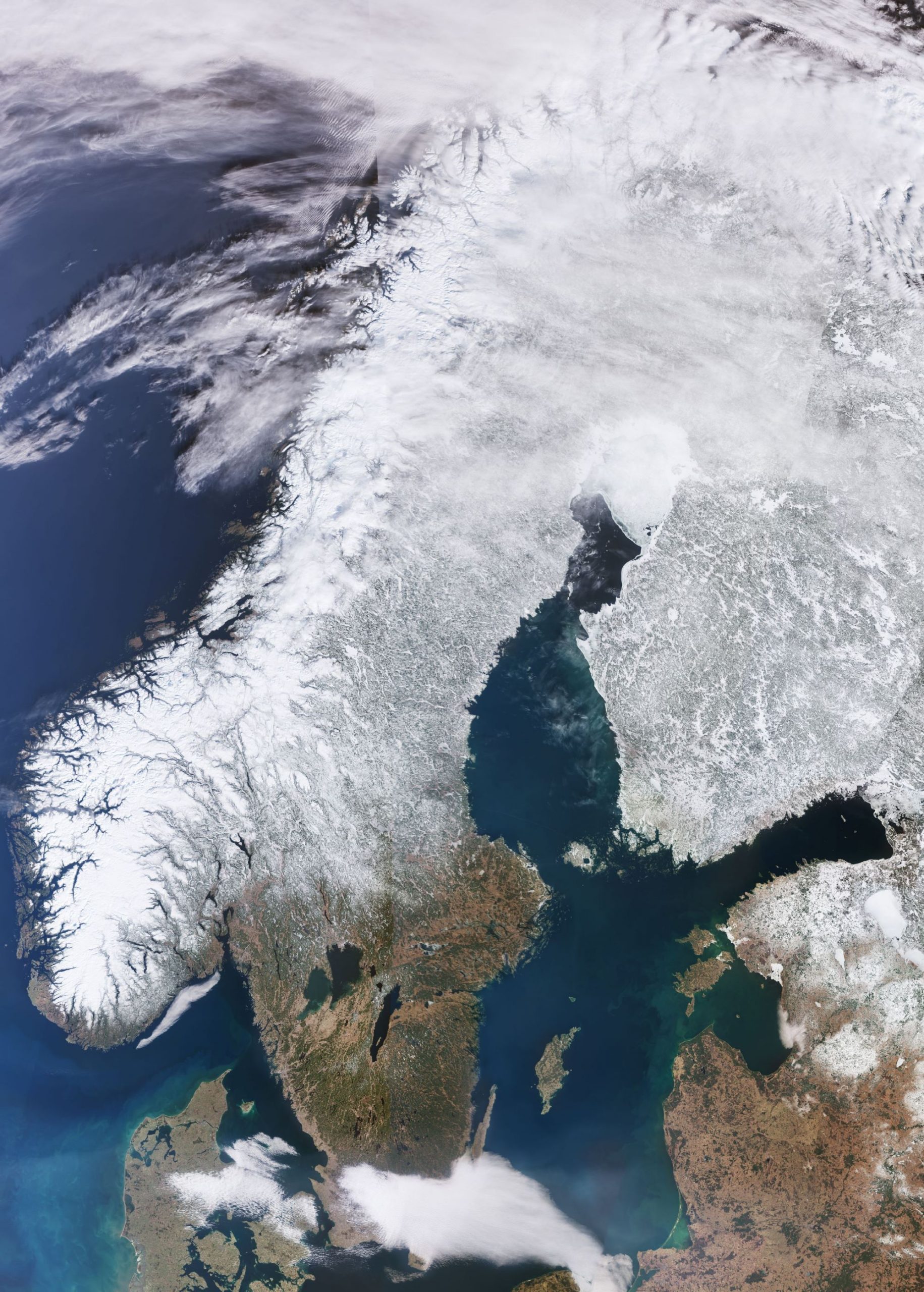[:ja]ESAの地球観測衛星Copernicus Sentinel-3が撮影したスカンジナビア半島の春の様子です。オスロやストックホルムなどはだいぶ雪が解けてきているのがわかります。

一般的にスカンジナビア諸国というとスウェーデン、ノルウェー、デンマークを指します。19世紀には、北欧諸国を中心に汎スカンディナヴィア主義が高揚し、北欧の一体化を望む運動がスウェーデンを中心に行われましたが、すでに国民国家を築いていた北欧三国は、ドイツの様に統一する事はなく現在に至っています。また、スカンジナビアの気象は東西で全く異なり、半島を二分する山脈を隔てて西部が温暖な地域、バルト海に面する東部は冷涼とした気候です。このため、地政学上でも東西で二分され、西部のノルウェーとデンマークは古代より海洋国家であり、海との繋がりが深く、東部のスウェーデンは、陸との繋がりが深く、大陸国家を築いてきました。
地上の様子はこちらです。
Spring in Scandinavia from Davolto Visuals on Vimeo.
参考文献: Scandinavian Peninsula (ESA)
地球俯瞰画像を見る: LiVEARTH
[Earthview Wonders] No.1532: Spring in Scandinavia🇳🇴🇩🇰🇸🇪
ESA’s Copernicus Sentinel-3 satellite captured the spring of the Scandinavian Peninsula. Oslo and Stockholm are no longer covered with snow.

Scandinavia is a region in Northern Europe, with strong historical, cultural, and linguistic ties. The majority national languages of the region, and their many dialects, belong to the Scandinavian dialect continuum, and are mutually intelligible North Germanic languages. The term Scandinavia in local usage covers the 3 kingdoms of Denmark, Norway, and Sweden. The southern and by far most populous regions of Scandinavia have a temperate climate. Scandinavia extends north of the Arctic Circle, but has relatively mild weather for its latitude due to the Gulf Stream. The climate varies from north to south and from west to east.
The local scenery on the ground is as follows.
Reference: Scandinavian Peninsula (ESA)
See earthview photo gallery: LiVEARTH[:]